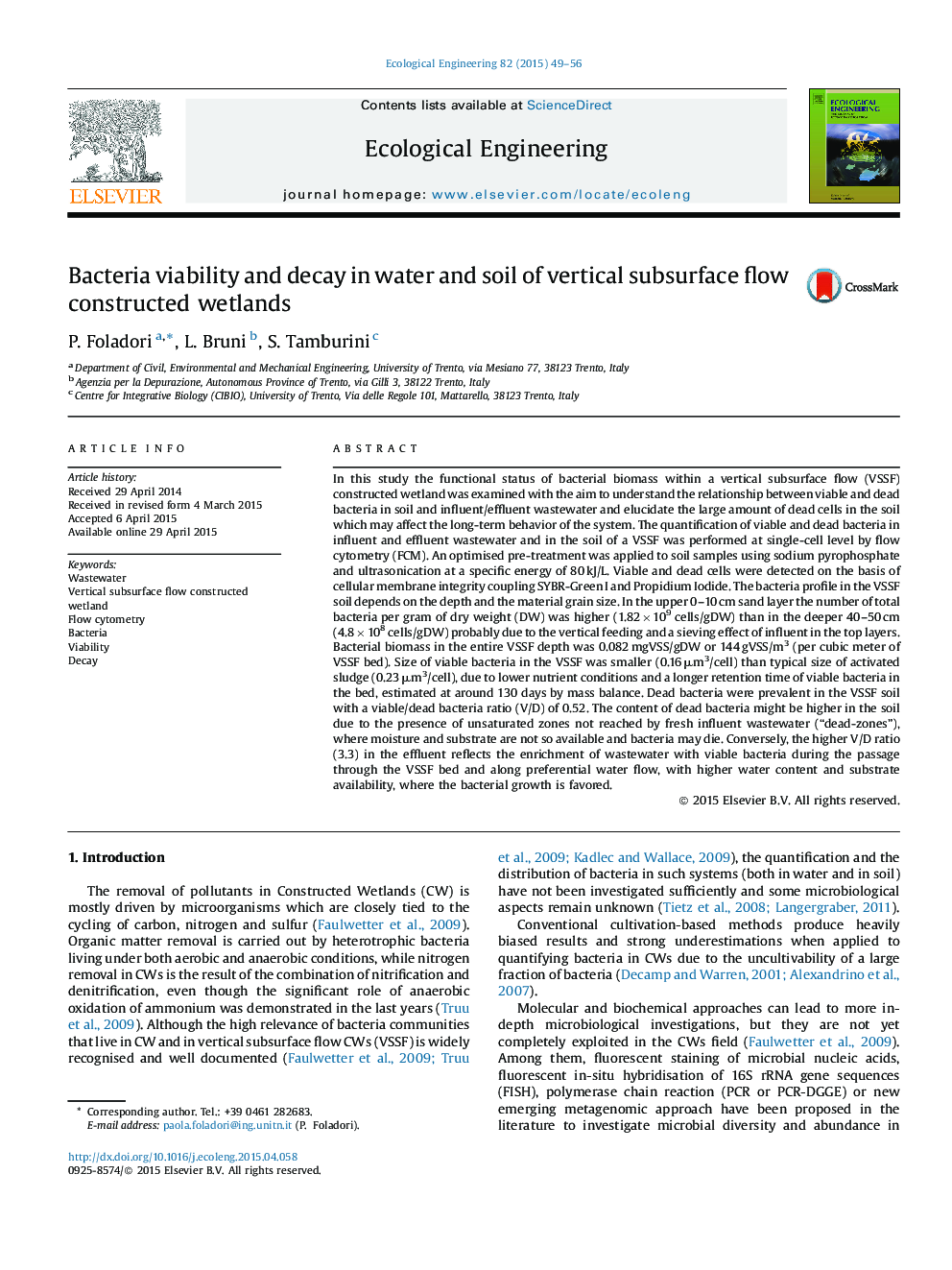| کد مقاله | کد نشریه | سال انتشار | مقاله انگلیسی | نسخه تمام متن |
|---|---|---|---|---|
| 4388948 | 1618017 | 2015 | 8 صفحه PDF | دانلود رایگان |
• Viable and dead bacteria were quantified in wastewater and inside a VSSF wetland.
• Retention time of viable cells in the bed was estimated at around 130 days.
• Effluent wastewater enriches in viable cells during the passage through the bed.
• Effluent viable cells originate from biofilm on soil rather than influent water.
• Dead cells accumulate in dead-zones of the soil with low moisture and substrate.
In this study the functional status of bacterial biomass within a vertical subsurface flow (VSSF) constructed wetland was examined with the aim to understand the relationship between viable and dead bacteria in soil and influent/effluent wastewater and elucidate the large amount of dead cells in the soil which may affect the long-term behavior of the system. The quantification of viable and dead bacteria in influent and effluent wastewater and in the soil of a VSSF was performed at single-cell level by flow cytometry (FCM). An optimised pre-treatment was applied to soil samples using sodium pyrophosphate and ultrasonication at a specific energy of 80 kJ/L. Viable and dead cells were detected on the basis of cellular membrane integrity coupling SYBR-Green I and Propidium Iodide. The bacteria profile in the VSSF soil depends on the depth and the material grain size. In the upper 0–10 cm sand layer the number of total bacteria per gram of dry weight (DW) was higher (1.82 × 109 cells/gDW) than in the deeper 40–50 cm (4.8 × 108 cells/gDW) probably due to the vertical feeding and a sieving effect of influent in the top layers. Bacterial biomass in the entire VSSF depth was 0.082 mgVSS/gDW or 144 gVSS/m3 (per cubic meter of VSSF bed). Size of viable bacteria in the VSSF was smaller (0.16 μm3/cell) than typical size of activated sludge (0.23 μm3/cell), due to lower nutrient conditions and a longer retention time of viable bacteria in the bed, estimated at around 130 days by mass balance. Dead bacteria were prevalent in the VSSF soil with a viable/dead bacteria ratio (V/D) of 0.52. The content of dead bacteria might be higher in the soil due to the presence of unsaturated zones not reached by fresh influent wastewater (“dead-zones”), where moisture and substrate are not so available and bacteria may die. Conversely, the higher V/D ratio (3.3) in the effluent reflects the enrichment of wastewater with viable bacteria during the passage through the VSSF bed and along preferential water flow, with higher water content and substrate availability, where the bacterial growth is favored.
Figure optionsDownload as PowerPoint slide
Journal: Ecological Engineering - Volume 82, September 2015, Pages 49–56
